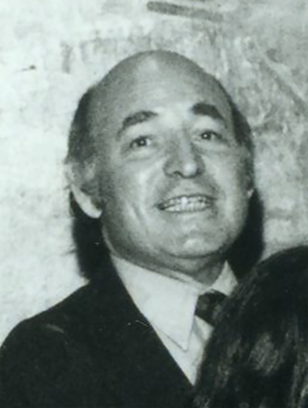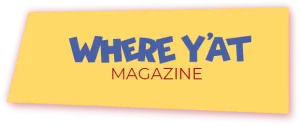Quint-Essential Jazz Fest
Over the course of its 55-year history, the New Orleans Jazz & Heritage Festival has witnessed many memorable moments and experienced explosive growth as it assumed its place among the premier festivals staged, not only in the United States but worldwide.
Throughout all of those years, from the festival's founding in 1970 up to the present, Arthur Quentin "Quint" Davis Jr. has been a constant presence. Spearheading its growth and fulfilling its mission of promoting and showcasing the indigenous music and culture of Louisiana as CEO of Festival Productions Incorporated, the parent organization of what is popularly known as Jazz Fest, Davis has been lauded as a visionary and innovator who helped revolutionize the festival industry.
The Beginning of Jazz Fest
Many of the most famous and popular musicians in the last half century have performed from the beginning. The event, which began as a relatively small gathering spanning only two days in the Congo Square (formerly Beauregard Square) quadrant of Louis Armstrong Park, now stages its events over two four-day weekends annually in late April and early May and has hosted millions of people over its long existence, contributing roughly $400 million in economic impact to the city of New Orleans.
Davis recounts many of his experiences over the years he has headed up the event and he proudly cited a litany of accomplishments. It all began with the experienced input from the man widely regarded as the father of the music festival concept, George Wein, founder of the Newport Jazz Festival and the Newport Folk Festival in the 1950s.

As Davis explained, "When [the New Orleans Hotel Motel Association], who wanted a jazz festival in New Orleans, brought George down, they told him, 'We want a festival just like the Newport Jazz Festival,' and George told them, 'If you do a festival just like Newport, that's what you'll always have.'" Davis noted that Wein's vision was focused on a festival paying tribute to New Orleans' storied history as the birthplace of jazz, as well as other genres indigenous to Louisiana: gospel, blues, second line brass bands, Cajun, and zydeco music.
For the first few years of the festival, the team from Newport that Wein brought to New Orleans directed most of the activities, including booking the talent, handling ticket sales, and other related logistics. Davis, a Tulane student who had connections with many local musicians, was brought on board with this group, along with Allison Miner and others. They learned as they went along until they felt confident and skilled enough to produce the festival themselves.
"In those first years, it was all New Orleans acts," Davis said. "We had Indians, second lines, zydeco, Cajun. We had one little tent with an upright piano in the grass and no P.A. system, and it was for gospel choirs we had there."
There were also food booths featuring the unique cuisine of the host city and state, as well as booths featuring the work of local artists.
While still in the 1970s, the festival began bringing in musicians from outside of Louisiana. One of the first of whom was Bonnie Raitt.
In 1972, the third year of the festival, the event moved to a larger venue at the Fair Grounds Race Course, where it remains to this day. In the beginning, the event only covered a portion of the track's infield
with a few stages set up for the performers. As the years passed, the festival grew and went on to encompass the full area, including the entire grandstand.
Also, over its long history, the festival has grown from its original four days to what will officially become eight days this year with the addition of a second "Local Thursday." On both of those Thursdays, Louisiana residents, with proper identification, will receive a discount on the admission price.
"People love those Local Thursdays where it's $50 for the local folks," Davis said, adding that this year's Jazz Fest will feature John Fogerty on the first Thursday and Santana on the second Thursday.
Jazz Fest Memories
As the scheduled days expanded at the Fair Grounds, so did the offerings, including a line of collectable Jazz Fest souvenirs. In 1975, Davis' former Tulane classmate, Bud Brimberg, created the first Jazz Fest poster, beginning a tradition that continues to this day. Hats and tee shirts are also among the most popular items, Davis noted.
This year's Jazz Fest poster, Hear and Now: Tank and the Bangas @ Jazz Fest, is designed by renowned New Orleans artist James Michalopoulos, whose previous posters included Louis Armstrong, Aaron Neville, Allen Toussaint, Fats Domino, and others.
Another recent innovation that Davis proudly cited is the Expedia Cultural Exchange Pavilion, where the focus each year is on a specific country with its music, art, food, culture, and more. In 2024, it was Colombia. This year, the pavilion celebrates the vibrant musical culture of Mexico.

When asked what some of his most memorable Jazz Fest moments were, Davis recalled, "The comebacks—the years when the festival came back." He pointed to 2006, when the festival was held while much of the city was still in ruins from Hurricane Katrina, including portions of the festival site. He also cited the 2022 festival that was held a year after it had been canceled by the COVID-19 pandemic.
"When Bruce Springsteen sang 'My City of Ruins' and 'with these hands, we will rebuild' [in 2006], that was probably my most emotional song ever," Davis said. In that same year, Paul Simon sang "Bridge Over Troubled Waters" with Allen Toussaint on piano and Irma Thomas singing the other part.
"But, overall, regardless of who's playing, people love going to Jazz Fest. The greatest thing about Jazz Fest is that it's in New Orleans. There's a great feeling of being there. They like the food, the arts, the crafts, and especially the music," Davis said. "You can put together stages, food, and crafts in any other city. But here, when you walk out of the gates, you're in New Orleans. You can't do that anywhere else."

